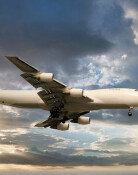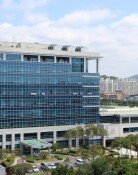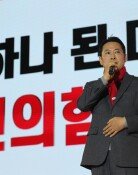N.Korea filling up 2 fuel tanks at missile launch site
N.Korea filling up 2 fuel tanks at missile launch site
Posted December. 08, 2012 08:45,
North Korea is filling up two fuel tanks at its missile launch site in Tongchang-ri in Cholsan County, North Pyongan Province, where it erected a long-range rocket, said a South Korean military source Friday, adding that Pyongyang says liftoff will come as early as Monday.
The source said the South Korean government has spotted increased activity of personnel and vehicles near the fuel storage area of the launch site. As soon as the North completes filling the storage tanks with fuel, he said, it is expected to supply the rocket with fuel. As fuel pipes that supply liquid fuel to the rocket are built in underground facilities, detecting fuel injection with satellite imagery is difficult.
Experts say Pyongyang will likely set a launch date depending on weather conditions as soon as the fuel injection is complete. North Korea announced that the launch would come between Dec. 10 and 22, but weather agencies forecast clear weather in Tongchang-ri on Dec. 11, though the day before will be cloudy. So experts expect the launch to happen Tuesday or Wednesday.
Once the North is seen injecting fuel into the rocket, the South Korean military plans to deploy three Aegis destroyers to the Yellow Sea that can track the trajectory of a ballistic missile launched from up to 1,000 kilometers away. Seoul is also ready a long-range radar system that can detect flying objects up to 500 kilometers away.
The U.S. has also deployed two Aegis destroyers with interceptor missiles to waters near the Korean Peninsula, and is reportedly planning to send two additional warships when the launch is imminent.
Adm. Samuel Locklear, the commander of the U.S. Pacific Command, told a news briefing that while North Korea is apparently trying use the launch to mark the first anniversary of the death of former leader Kim Jong Il, the firing is really intended to show the world its missile capability and that the North is a nuclear state.
Of course, in my role as the (Pacific Command) commander, my No. 1 priority is to ensure that we have properly reassured our allies and that we have properly defended our own homeland, and we will position our assets necessary to do that, he said, adding that he was unsure at the moment if the launch would succeed.
In Japan, Prime Minister Yoshihiko Noda held a national security meeting Friday in which he told the Self-Defense Forces to shoot down the rocket if it threatens any part of Japanese territory. Tokyo plans to intercept with missiles the main body or debris of the rocket if it is feared to land on Japanese territory. Japan issued the same order when North Korea test-fired missiles in April 2009 and April this year.
ysh1005@donga.com




![넘치는 전재수 과거 사진들…유죄의 증거일까, 무죄의 증거일까[청계천 옆 사진관]](https://dimg.donga.com/c/138/175/90/1/wps/NEWS/IMAGE/2025/12/20/132997378.1.jpg)


